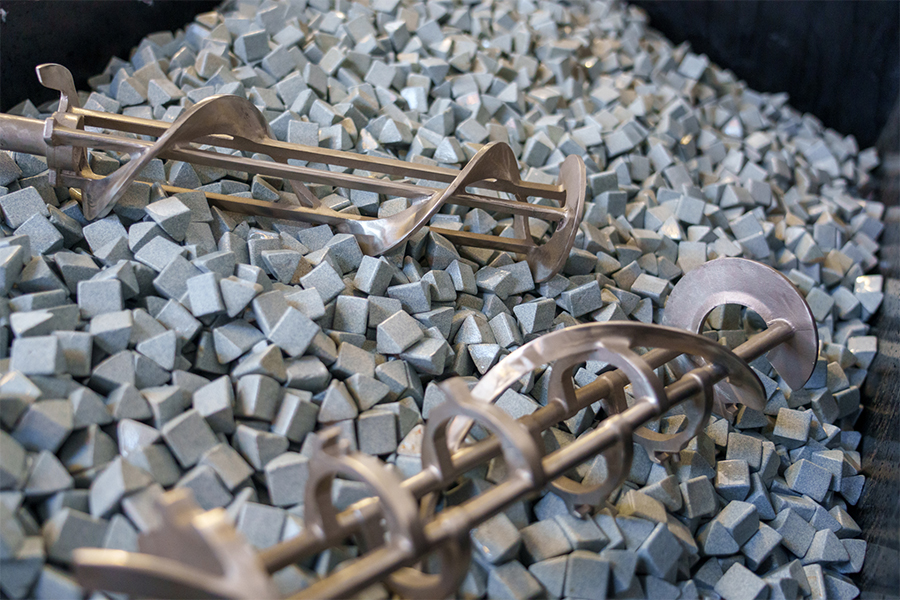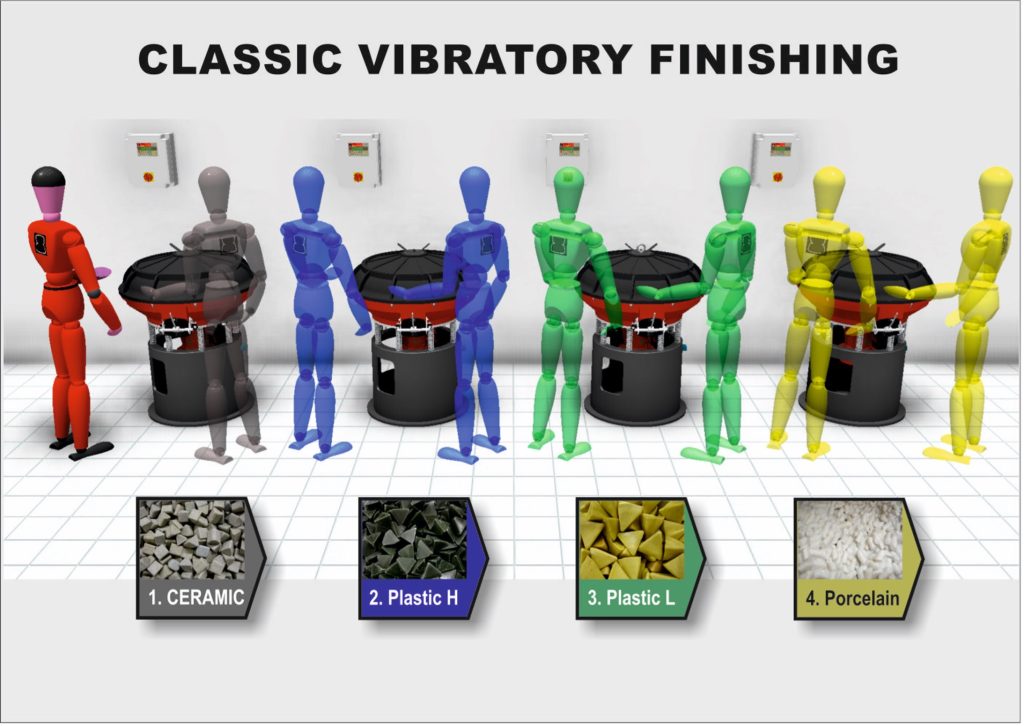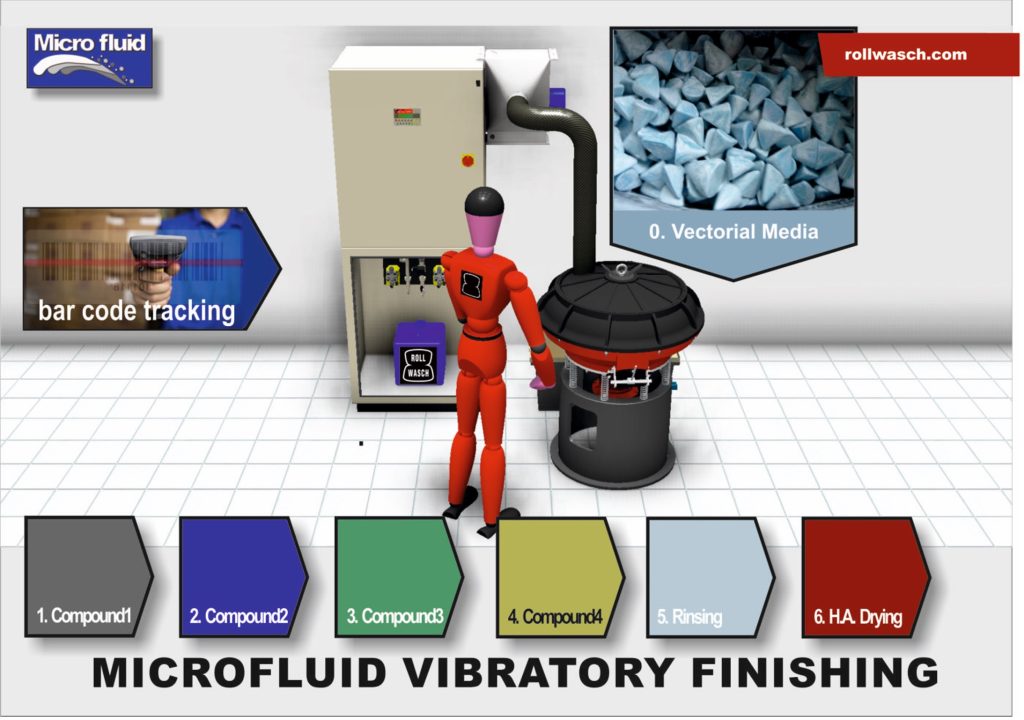
Home » Specialisation technological macro-areas » MSF – Mass Surface Finishing » Microfluid

What a Microfluid surface finishing process is and when it is useful to employ it, is easily understandable from the two illustrative diagrams shown below.

In this example, a process that is based on a four machines sequence is carried out, a first unit with a very aggressive ceramic media, a second unit with a high abrasivity plastic media, a third unit with a medium-fine abrasivity plastic media and a fourth unit with porcelain. The parts to be treated have to be loaded and unloaded from each of the four units, with a considerable waste of manpower.

A MICROFLUID process is launched with a recipe code, associated with a sequence of cycle phases with times, frequencies, dosage, rinsing, etc.), or with the reading of a barcode, a matrix code or a QR code.
Unlike the traditional finishing processes, the Microfluid process does not use abrasive finishing media, like ceramic media, but employs “vectorial media”, which usually have a neutral and not abrasive behaviour. A vectorial media works as the «vector» of a specific compound, which is rather «sticky» and adherent both to the media and to the surface of the parts to be treated, just like the Microfluid finishing compounds (in Gel). Therefore, rather than the media, it’s the compound the element performing the finishing; the compound is easy to rinse and to measure in different gradations, one after the other, automatically and in programmable sequence.
These compounds are different from all common finishing compounds: they are not liquid, neither pastes, nor powders. The MICROFLUID finishing compounds are made of GEL. This GEL compound is produced using specific abrasives and it can be easily automatically pumped.



